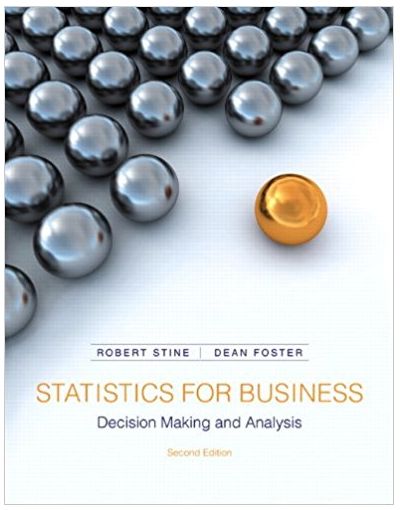Question
A fast-food company operates a factory and TEN retail stores in Hong Kong. Its factory produces 20 types of sushi which are sold through its
A fast-food company operates a factory and TEN retail stores in Hong Kong. Its factory produces 20 types of sushi which are sold through its retail stores. Past sales records of EACH store show that the half-day sales from morning to noon are 500 pieces (with 25 pieces x 20 types) on average. The average half-day sales from noon to evening are also the same. In total, the average daily sales are 1000 pieces (with 50 pieces x 20 types). The daily storage cost in the store is $100 for 1000 pieces, and $50 for 500 pieces of sushi. For the factory, a production setup is required to produce a type of sushi. To produce 20 types of sushi, 20 setups are required. That is, one setup for each type. The factory produces either 250 or 500 pieces of each of type sushi at a time. Setup cost (a fixed cost) for each production run is $10. The variable production cost for each piece of sushi is $1. The daily storage cost in the factory for 5,000 pieces of sushi is $200. Transportation of sushi from the factory to each retail store is provided by a trucking company. The Truckload (TL) cost charged for each trip is $100 per store. You, as the company’s logistics manager, are asked to evaluate the following three options for improving distribution performance.
Option 1
In the early morning, produce 10,000 pieces of sushi and deliver them from the factory to the stores before they open. Each store receives 1,000 pieces of sushi in the early morning and pays $100 daily storage cost. No storage is needed in the factory.
Option 2
In the early morning, produce 5,000 pieces of sushi and deliver them from the factory to the stores before they open, and before noon produce 5,000 pieces of sushi and deliver them from the factory to the stores. Each store receives 500 pieces in the early morning and 500 pieces by noon and pays $50 daily storage cost. No storage is needed in the factory.
Option 3
In the early morning, produce 10,000 pieces of sushi and store 5,000 pieces in the factory. Each store received 500 pieces in the early morning and 500 pieces before noon. Each store pays $50 daily storage cost, and the factory pays $200 daily storage cost.
Explain why the responsiveness performance of Option 1 is higher than that of Options 2 and 3 with TWO reasons.
Explain TWO suggestions for this fast-food company to achieve higher responsiveness through improved FACILITY decisions on its factory.
Explain TWO suggestions for this fast-food company to achieve higher responsiveness through improved FACILITY decisions on its retail stores.
Step by Step Solution
3.40 Rating (163 Votes )
There are 3 Steps involved in it
Step: 1
1 The responsiveness performance of Option 1 is higher than that of Options 2 and 3 because Option 1 ...
Get Instant Access to Expert-Tailored Solutions
See step-by-step solutions with expert insights and AI powered tools for academic success
Step: 2

Step: 3

Ace Your Homework with AI
Get the answers you need in no time with our AI-driven, step-by-step assistance
Get Started


